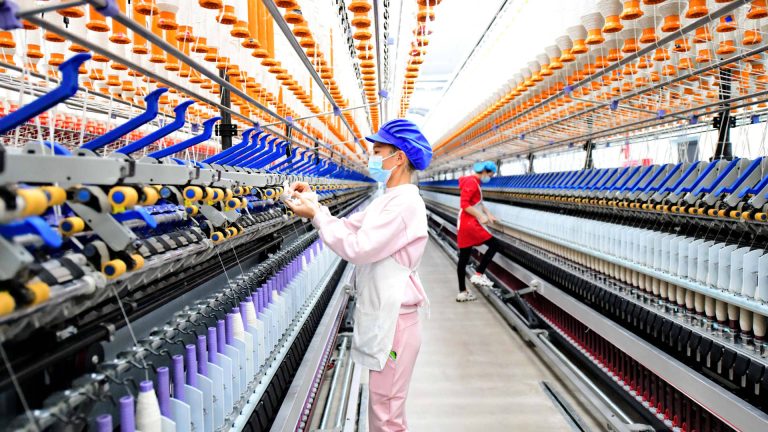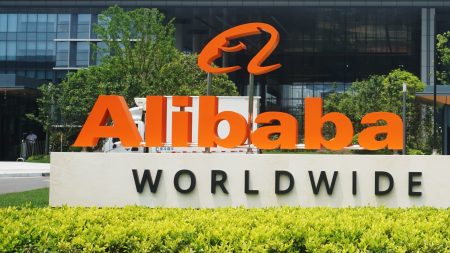China’s long-awaited rebound from the Covid pandemic is floundering: On Tuesday, the country’s central bank unexpectedly cut interests in hopes of fixing a “confidence crisis” in the economy . The news had us once again revisiting the portfolio’s exposure to China. The chart below is meant to provide a high level view of the revenue exposure each of the 35 companies in our portfolio has to the world’s second-largest economy. It’s not be-all and end-all for any investing decisions. There are additional factors to consider such as the nature of the products being sold into China and the end markets ultimately driving the demand. We are looking at this screen from two angles: one is revenue exposure to mainland China, the other to the broader Asia-Pacific region, which would include the key areas of Taiwan and Macau. As we go through the portfolio, we must also keep in mind that a lack of direct revenue coming from China does not equate to a complete lack of exposure. First, a couple caveats: Our energy exploration and production stocks Coterra Energy (CTRA) and Pioneer Natural Resources (PXD) screen as having zero revenue exposure outside of the United States. However, both are directly exposed to the price of crude, and since oil and natural gas are global commodities, the selling price of these products is directly linked to global demand. The largest consumer of energy is China. As a result, Chinese economic activity is a major indirect driver of realized selling prices and therefore sales and cash flows for US energy producers. Nvidia (NVDA) is another stock where the direct revenue exposure can be misleading. Nvidia’s revenue is not attributed to the country in which the consumer buys a product that contains one of the company’s semiconductors. Instead, sales are allocated to individual countries based on where the products are initially billed — even if the revenue is attributable to end customers in a different location. Advanced Micro Devices (AMD) operates the same way. That’s an important dynamic to be mindful of because it means that the end user demand driving sales may be coming from outside of China, even if the revenue for AMD and Nvidia is recorded as coming from China. For example, if an Apple computer with an AMD graphics card is assembled in China, that Apple purchase of AMD chips may register as China revenue, even if the computer is ultimately sold in the U.S. As a result, we must consider our portfolio both quantitively via the screen, but also qualitatively, which requires more analysis about the broader flow of money for goods and services throughout the global supply chain. The four portfolio names we focus on most when considering China are Wynn Resorts, Estee Lauder, Apple and Starbucks. Wynn Resorts While mainland China may not be doing so hot, the appetite for a good time in Macau appears be strong. In the most recent quarterly earnings , Wynn Resorts (WYNN) said gross gaming revenue momentum rose in the resort area throughout the second quarter and continued into the third quarter. As a result, we think today’s hit is the result of knee-jerk selling that doesn’t really apply to Wynn Resorts directly. Of course, a weaker consumer in mainland China could foreshadow a decline in Macau revenues, so we will be monitoring monthly gaming revenue data closely for any indication that demand has slowed since we last heard from management. However, as it stands now, demand remains strong, with GGRAsia reporting Tuesday that Macau welcomed 139,000 visitors this past Saturday, the highest daily tally since the onset of the Covid-19 pandemic. This could indicate that the “long on money, short on time” dynamic — spending on experiences and services over goods — we have seen play out in the U.S. in recent quarter is happening in China. Starbucks The U.S.’s largest coffee chain is the least exposed of the four and that could allow the company to realize more growth in the region despite the weak economic data. In the company’s fiscal third quarter we saw China same-store sales skyrocket 46%, with revenue surging 51% versus the year-ago period (up 60% excluding the foreign exchange headwind). Management also said Starbucks Rewards members in China now number more than 20 million, the “highest number of 90-day active users [Starbucks has] ever had” there. On the earnings call, management called out a major opportunity to convert the traditional tea-drinking population into coffee consumers. The average Chinese consumer drinks only 12 cups of coffee per year, well below the 200 a year in Japan or the 380 in the U.S. Clearly, there is a lot of growth left to realize in China and as a result, we aren’t all that concerned about these readings on the Chinese economy. The current coffee market is small enough that it can continue to grow in the face of broader economic headwinds and Starbucks is in a position to come out even stronger once the economy finally rebound. Estee Lauder We’re most concerned about Estee Lauder (EL) and its exposure to China. We’ll hear from management on Friday morning when the cosmetics company reports earnings, but our expectations are about as low as they can be heading into the print. Only 34% of revenue may be directly tied to China but as we know, “the travel retail recovery [in Asia more broadly] was challenged by the slower-than-anticipated resumption of international flights, granting of visas, and organized group tours.” That makes the 60% revenue exposure to the Asia-Pacific region more concerning, even as mainland China realized organic sales growth during the quarter. The silver lining of today’s update from China is that it should solidify investor expectations that forward guidance isn’t going to be great. We wouldn’t be shocked to get a “kitchen sink” guide where management just takes numbers down to a level they can easily beat to set us up for some beat-and-raise quarters in the future. China recently lifted its group tour ban to other countries, which should also help the travel retail business. But the recovery will be gradual and we are maintaining our 2 rating into the print. Apple The world’s most valuable company is also reliant on China for growth. While its products are technically discretionary — anyone that has ever left their house without their phone might consider it more of a must-have — we aren’t overly concerned about today’s news. Weaker demand in the global smartphone market is well known. And Apple’s (AAPL) recent earnings release showed China revenues accelerate from negative 3% in the second quarter to up 8% in the third. As a result, total sales, services sales and wearables, home and accessories sales all set June quarter records in Greater China. Apple is also looking to grow into new emerging markets including India, which could represent a similar opportunity to China with a huge population and a growing middle class. Bottom line The latest bad news out of China doesn’t shake us out of any of our holdings. But it is worth keeping in mind and could result in us allowing for “wider scales” (meaning larger declines) in between buys as this kind of news can certainly weigh on investor sentiment for stocks that do business in the region — even if the pressure ultimately proves temporary. As a result, we would be more inclined to be view any significant drawdowns in U.S. companies exposed to China as a buying opportunity. The recovery may be taking longer than expected but eventually it will come to fruition. Like it or not, the U.S. and China are economically reliant each other and we’re rooting for that bounce back sooner than later. (See here for a full list of the stocks in Jim Cramer’s Charitable Trust.) As a subscriber to the CNBC Investing Club with Jim Cramer, you will receive a trade alert before Jim makes a trade. Jim waits 45 minutes after sending a trade alert before buying or selling a stock in his charitable trust’s portfolio. If Jim has talked about a stock on CNBC TV, he waits 72 hours after issuing the trade alert before executing the trade. THE ABOVE INVESTING CLUB INFORMATION IS SUBJECT TO OUR TERMS AND CONDITIONS AND PRIVACY POLICY , TOGETHER WITH OUR DISCLAIMER . NO FIDUCIARY OBLIGATION OR DUTY EXISTS, OR IS CREATED, BY VIRTUE OF YOUR RECEIPT OF ANY INFORMATION PROVIDED IN CONNECTION WITH THE INVESTING CLUB. NO SPECIFIC OUTCOME OR PROFIT IS GUARANTEED.
Read the full article here









